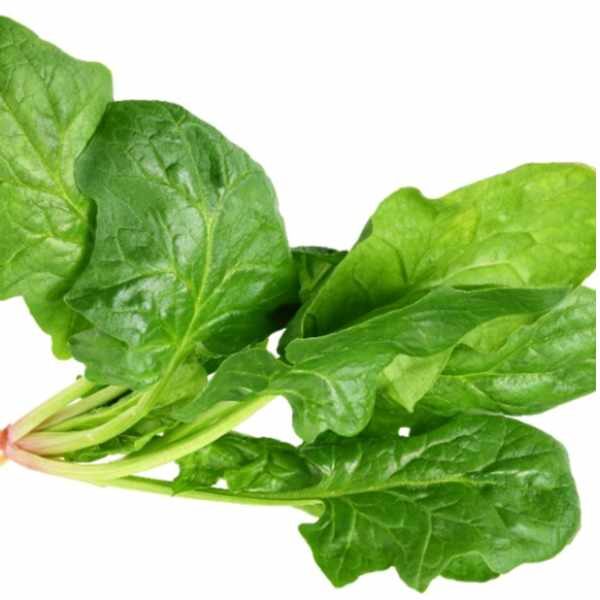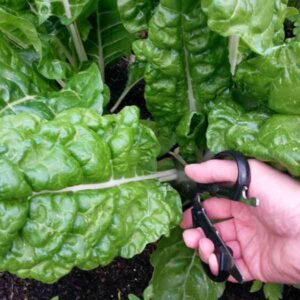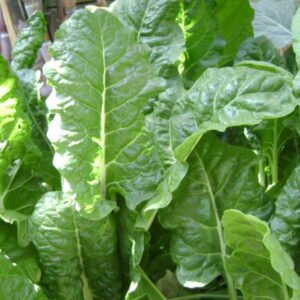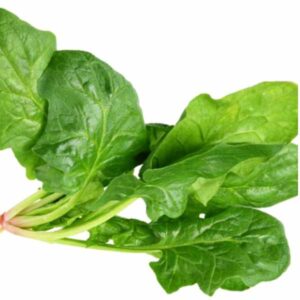Spinach English Winter Giant
$4.49
Spinacia Oleracea
- Seed Count 30
- Cool Season Variety
- Annual
In stock
Description
Spinach English Winter Giant most probably originates from 1866 France, despite it’s commonly used name. It has large, semi-savoyed green leaves and is a cool hardy variety making it an excellent selection for autumn, winter and early spring. The leaves have a fine flavour and are tender and can grow to the size of Swiss chard leaves.
It has a rich, bold flavour that intensifies the longer the leaves are left on the plant. Great raw in salads when young as baby leaf and also excellent when used as a cooked green vegetable in curries, soups and casseroles when older. This variety is lower in oxalic acid than most spinach varieties.
| Method: Sow direct | Soil Temp: 10°C - 25°C |
| Cool Mountain: Mar - Sep | Position: Part sun |
| Arid: Jan - Dec | Row Spacing: 30cm apart |
| Temperate: Mar - Jul | Planting Depth: 3mm |
| Sub Tropical: Not recommended | Harvest: 40 days |
| Tropical: Not recommended | Plant Height: 30cm |
Soil Preparation
pH:
- 6.0–7.0 test soil and adjust with lime or sulphur if needed.
Texture:
- Well drained, loamy soil enriched with compost or aged manure.
Drainage:
- Raised beds or mounds in heavy soils to prevent waterlogging.
Planting Seeds
Depth:
- 1 cm deep.
Spacing:
- 15 cm between plants, 30 cm between rows.
- Succession Planting: Sow every 2–3 weeks for continuous harvest.
Germination Tips:
- Soak seeds 12–24 hours before planting to improve germination.
- Use shade cloth or mulch in warmer areas to keep soil cool.
Watering
- Keep soil consistently moist but not soggy.
- Water deeply 2–3 times weekly; mulch with straw or sugar cane to retain moisture.
- Avoid overhead watering to reduce disease risk.
Fertilising
- Apply balanced fertiliser at planting.
- Side dress with a nitrogen rich fertiliser 4 weeks after germination.
- Avoid over fertilising to prevent bolting.
Pest & Disease Management
Pests:
- Aphids – Spray with soapy water or neem oil.
- Slugs/Snails – Use beer traps or diatomaceous earth.
- Flea Beetles – Protect with row covers; plant radishes as trap crops.
Diseases:
- Downy Mildew – Ensure good airflow, use copper based fungicides.
- Spinach Blight – Remove infected plants, control aphids.
Harvesting
- Begin harvesting outer leaves when 10–15 cm long (6–8 weeks).
- Pick in the morning for crispness; avoid damaging the crown.
- Regular harvesting delays bolting.
- If bolting occurs, collect seeds or replace plants.
Companion Planting Guide
Good Companions:
- Beans/Peas – Fix nitrogen in soil.
- Strawberries – Low growing, noncompetitive.
- Radishes – Deter leaf miners, act as trap crops.
- Lettuce/Cabbage – Share similar growing conditions.
- Marigolds/Nasturtiums: Repel pests like aphids and nematodes.
Avoid Planting With:
- Potatoes – Compete for nutrients.
- Fennel – Allelopathic; inhibits growth.
Troubleshooting
Bolting:
- Caused by heat/long days.
- Use bolt resistant varieties (e.g., ‘Perpetual Spinach’) and shade cloth.
Yellow Leaves:
- Overwatering or nitrogen deficiency.
- Adjust watering and fertilise.
Container Growing
- Use pots 20–30 cm deep with drainage holes.
- Keep in partial shade during summer.
Crop Rotation
- Avoid planting after beets or chard (same family).
- Rotate with legumes or brassicas.

Order Times
Seed orders are normally dispatched within three business days. You will receive an email when seeds are mailed out.
Packaging
No plastics are used in our seed envelopes or postage materials. Everything is compostable and fully bio degradable.
Postage Days
Seeds are mailed out Monday to Friday at 1pm. Except for the Friday of long weekends.
Postage Times
WA 2-3 Days: SA,NT 3-5 Days: NSW, ACT, QLD, VIC: 5-7 Days
Carrier
We use Australia Post Letter Postage for the majority of orders






Reviews
There are no reviews yet